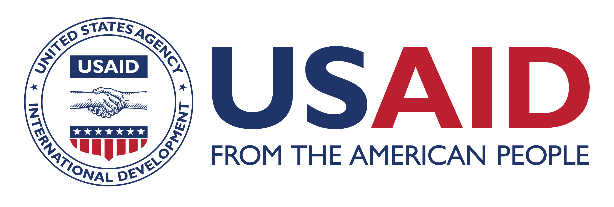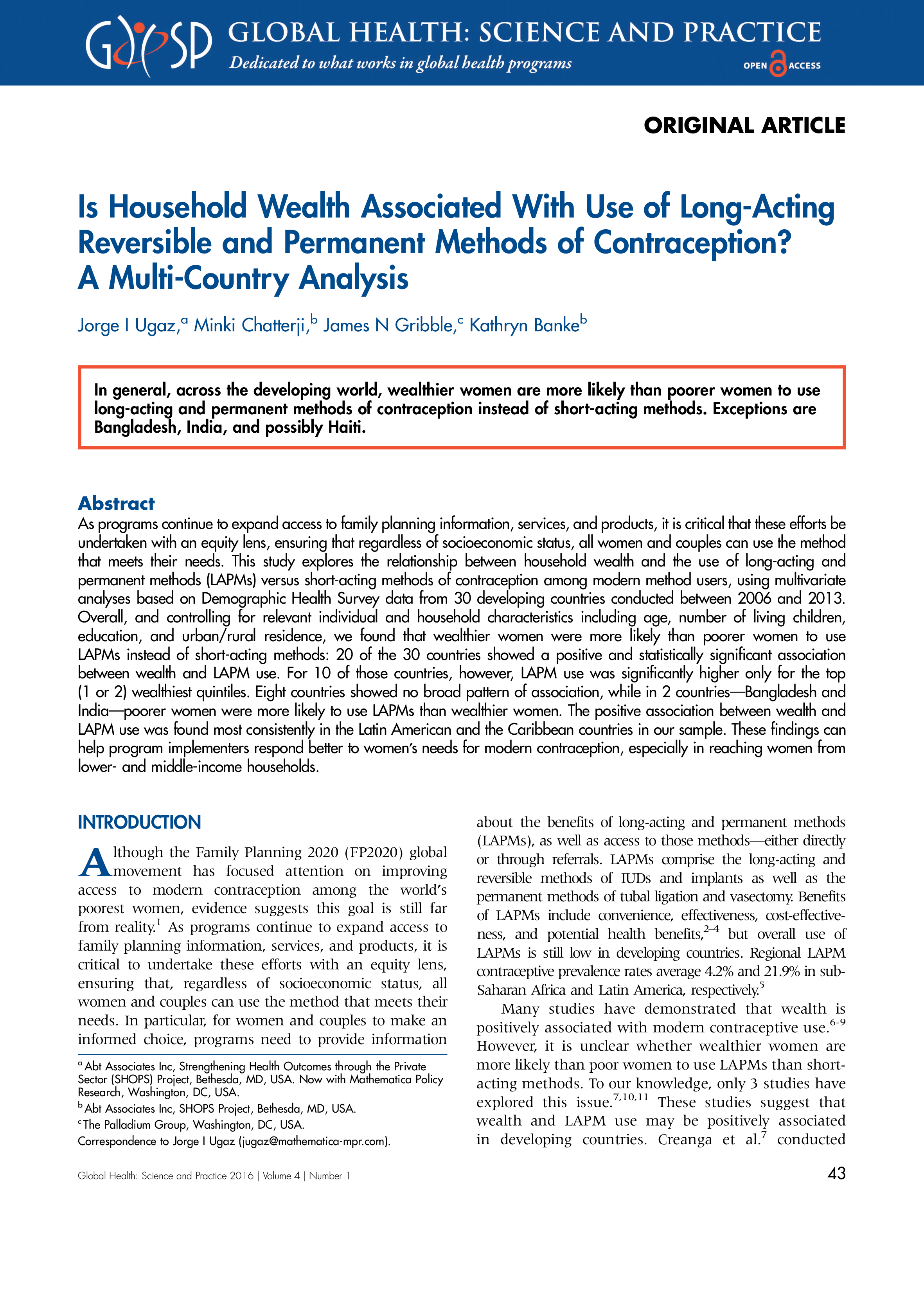
Resource Library
Is Household Wealth Associated With Use of Long-Acting Reversible and Permanent Methods of Contraception? A Multi-Country Analysis
As programs continue to expand access to family planning information, services, and products, it is critical that these efforts be undertaken with an equity lens, ensuring that regardless of socioeconomic status, all women and couples can use the method that meets their needs. This study explores the relationship between household wealth and the use of long-acting and permanent methods (LAPMs) versus short-acting methods of contraception among modern method users, using multivariate analyses based on Demographic Health Survey data from 30 developing countries conducted between 2006 and 2013. Overall, and controlling for relevant individual and household characteristics including age, number of living children, education, and urban/rural residence, we found that wealthier women were more likely than poorer women to use LAPMs instead of short-acting methods: 20 of the 30 countries showed a positive and statistically significant association between wealth and LAPM use. For 10 of those countries, however, LAPM use was significantly higher only for the top (1 or 2) wealthiest quintiles. Eight countries showed no broad pattern of association, while in 2 countries—Bangladesh and India—poorer women were more likely to use LAPMs than wealthier women. The positive association between wealth and LAPM use was found most consistently in the Latin American and the Caribbean countries in our sample. These findings can help program implementers respond better to women’s needs for modern contraception, especially in reaching women from lower- and middle-income households.
This article was published in Global Health: Science and Practice, Volume 4, No.1, pages 43-54.
Resource Type :
Country :
Year : 2016-02-17T00:00:00
Language : English
Project : SHOPS


